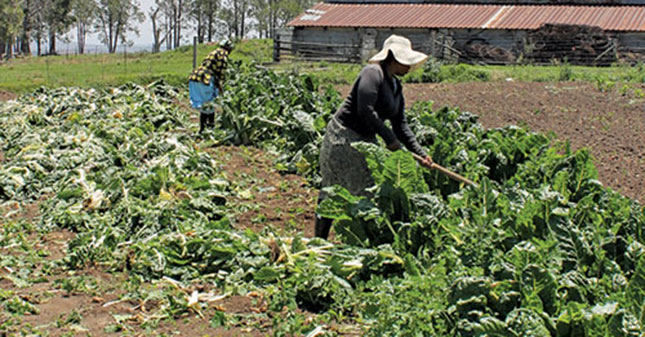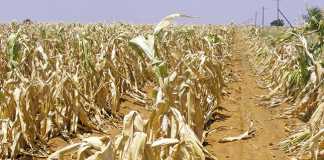There has been a lot of hype surrounding plans to launch a biofuel industry in South Africa but pecious little serious investment. Stephan Hofstätter looks at how the industry can revive rural economies – and what is keeping the big spenders away. Enthusiasm for biofuel in South Africa peaked last year, on the back of soaring oil prices and a slump in agricultural commodities. This prompted a rash of announcements promising major investments in processing plants and feedstock estates.
Many farmers pinned their hopes on massive new stable market opportunities that would gobble up surpluses and reduce price volatility. Since then, oil prices have cooled and commodities risen steeply, prompting prospective investors to take a hard look at what the industry needs if it’s going to establish itself in South Africa.
The conclusion is that, while government’s current incentives package is on the table, it will never happen. The Southern African Biofuels Association (Saba), whose members include major banks, biofuel producers, technology suppliers and agricultural commodity groups, believes there are solid grounds, in the broader national interest, for government to crank up support. Reversing a trend “If you look at the primary agricultural sector, South Africa is a net surplus producer and everything is hunky-dory,” says Andrew Makenete, president of Saba and former agribusiness manager at Absa. “But there’s very little capital formation going back into that sector.
There have been no major new road developments or dam developments that can really unlock additional value in the rural areas.” With a limited agricultural base able to service SA ’s needs, the country could get away with a limited investment framework for rural areas, he says. But the net impacts have been thinner returns, larger farms needed to benefit from economies of scale, and major job losses. The biofuel industry promises to reverse the trend, first by greatly expanding and stabilising the market. “Right now South Africa typically uses about eight million tons of maize.
Farmers overshoot the market one year and undershoot the next,” he says. “Potentially, we can create the capacity for an extra four to eight million tons in a well-defined, permanent additional market with fixed contracts.” “The industry could also attract new investment in infrastructure, logistics, processing and refining in rural areas, and stabilise rural employment patterns by providing jobs in primary and downstream production,” Makenete says. Biofuel byproducts can transform the livestock, dairy and poultry sectors. “South Africa imports 600 000 tons of soya cake, used in poultry feed, so this becomes an opportunity for import substitution,” Makenete says. “The same goes for ethanol from maize, which produces dried distillers grains with solubles (DDGS) as a by-product. “Suddenly you have the opportunity to produce a significant amount of high-quality feed material, so the opportunities for feedlotting increase.”
Reservations and enthusiasm
Because of food-security sensitivities, and its poor energy balance, government and green lobbyists don’t favour maize as a biofuel feedstock. US studies have shown it takes almost the same volume of fossil fuel to produce a litre of ethanol from maize, while for sugarcane the ratio is about one-to-six. But the maize industry believes its case has been misrepresented. Grain SA ’s general manager John Purchase points out that new technology increases ethanol yields by over 10% per ton of maize. The starch content of South African maize, 8% higher than in the US , also translates into a higher ethanol yield. Food-security concerns are overstated because South Africa plants more maize than it consumes, says Purchase.
Cabinet gave government the green light to investigate the viability of a biofuel industry in South Africa. Since then, there has been enormous political enthusiasm for biofuel for several reasons: biofuel increases energy security in a time of rising fuel prices and demand; it is expected to meet 75% of SA ’s renewable energy targets while reducing greenhouse gas emissions; and offers the prospect of bridging the first and second economies by stimulating commercial agriculture in the former homelands.
Incentive scheme proposals
Government established a biofuel task team, with representatives from 12 departments including agriculture, minerals and energy, treasury and the presidency. Last December it released its final report, based on a viability study, for public comment. The report concluded the industry would be economically viable with “a moderate level of support” until 2013, a mandatory bioethanol target of 8% (E8) and biodiesel blend of 2% (B2) and an average oil price of US .
This would add R1,7 billion or 0,11% to GDP every year, and create a total of 55 000 jobs, and a net annual reduction of R3,7 billion in current account deficit. “Moderate support” means a 45% fuel levy rebate for commercial biodiesel producers and 70% for bioethanol makers, and an equalisation fund that includes a clawback mechanism requiring biofuel makers to pay in US ,35 for every US the oil price climbs above US per barrel, in return for being subsidised at low oil prices (below US ). However, Saba argues this is off the mark, and that for the industry to find its feet an incentive package must be in place for 10 to 15 years. It must include a 100% tax rebate for all producers and a 15-year moratorium on any clawback mechanism.
Saba also believes the 8% mandatory blending target for ethanol fails to consider SA ’s potential to produce major maize and sugar surpluses, and the 2% biodiesel blend target will result in one or two players dominating the market. Only 162 million litres would be needed to meet a B2 target – insufficient to run two viable plants. Saba wants an initial mandatory target of E10/B5, to be increased as the industry matures. Pricing is another major sticking point.
Government wants to set bioethanol prices at the Basic Fuel Price (BF P) – the import parity price for local fuel producers – less 5% to compensate the fuel industry for additional depot and handling costs. The biofuel lobby disagrees, saying the BF P does not reflect the special advantages biofuel has over fossil fuels, particularly social, environmental and rural development benefits. They want the real cost of producing ethanol considered when a fixed price is determined for the start-up period, and want the state to pay for upgrading fuel industry infrastructure.
SA ’s R6 billion sugarcane industry, potentially a major player in the biofuel game, says it’s anxious not to lag further behind internationally, but cannot viably produce ethanol at current support levels. “With what’s on the table at the moment, we’d be better off selling our sugar overseas,” says Bruce Galloway, chairperson of the SA Canegrowers’ Association.
Licensing debates
Licensing remains a major bone of contention. When discussions about the incentives needed to launch the industry kicked off in 2005, it wasn’t even on the agenda. Now biofuel champions worry that the state wants to impose licensing conditions that would lock in market inefficiencies.
Lobbyists argue for a licensing regime, granting a limited number of producers’ exclusive rights to supply biofuel to meet mandatory national blending targets, as well as exclusive access to the bulk of state support, until initial outlays are recovered. Otherwise there would be little impetus to make the large, highrisk investments required. Plants to convert maize or sugar into ethanol, or soya and sunflower into diesel, cost between R600 million to R1 billion. Open to a transparent tendering process, licences could set technical and financial criteria to ensure a consistent supply of fuel meeting national quality specifications; require plants to source 30% of feedstock from emerging farmers while offering shares to black entrepreneurs; and be linked to contracts with bulk fuel buyers.
Saba wants logistical efficiency and the agricultural potential for growing energy crops to determine how licences are distributed among the provinces, but is worried about political interference. Following a presidential working group meeting on agriculture earlier this year, land and agriculture minister Lulama Xingwana announced that, based on a study by the Agricultural Research Council, two million hectares of underutilised land in the former homelands is available for biofuel crop production.
This represents over 65% of the land needed to grow 10 million tons of energy crops, and meet government’s production target of 1 billion litres of biofuel a year – almost 5% total liquid road transport fuel consumption – by 2013. The remark sparked fears that political pressure would make licences conditional on building processing plants in or near former homelands, driving up costs. Investors say they would want the nightmare of insecure and overlapping tenure and property rights, and crumbling transport infrastructure sorted out first, to ensure security of feedstock supply and logistical efficiency.
Recent efforts to revive major irrigation schemes in the former Transkei, and turn them into energy fuel farms, have been hamstrung by squabbles among corrupt local elites and poor performance by municipal and provincial agriculture officials. In the meantime, however, government has given assurances that there will be no political interference in the licensing process.
Construction projects
Meanwhile, Ethanol Africa, the company that announced last year it would build eight plants in the heart of SA ’s maize belt in the Free State and North West, has apparently put construction on hold because of a failure to secure finance. In February this year an empowerment deal was announced with a BEE consortium led by Vali Moosa’s Lereko Holdings, and a month later the company announced it had secured US 0 million in funding for its first plant in Bothaville. However, last month CEO Johan Hoffman told Business Report that offers to invest were on hold until policy was finalised. So far the IDC, in partnership with the Central Energy Fund, has funded full feasibility studies for two biofuel plants – one processing sweet sorghum on the Blyde River irrigation scheme in Mpumalanga, and the other sugar beet on the Fish River scheme in the Eastern Cape.
The studies, likely to comprise 3% to 5% of the total project cost, are expected to be complete by September, with construction slated to start early next year. The IDC has also identified several other suitable sites, including Pondoland in the Eastern Cape, for cane sugar processing and Makhathini in KwaZulu- Natal for cassava. “We hope to see five to eight projects on the go,” says the IDC’s head of agro industries, Rian Coetzee. Coetzee denies that the IDC has been politically pressured into backing unviable or inefficient proposals in former homelands. “Our criteria is economic viability and maximising developmental impact, so yes, we support a licensing regime that encourages links to the second economy,” he says. “But if the risks are too high we won’t invest.”
Leaving the door open
Still, as Absa – South Africa’s biggest bank in commercial agriculture with 50% of market share – pointed out in a paper presented in Zambia last month that the IDC is a state-funded institution. It is therefore able to offer loans at lower interest rates, with longer repayment terms and with less stringent security requirements than private lenders. This allows the IDC to be less stringent in assessing the impact of location on profit margins (See box: Getting the sums right). Right now government isn’t giving much away about the incentive package it has submitted to Cabinet, although there are indications that at least some investor concerns have been addressed. Sandile Tyatya, the Department of Minerals and Energy official heading the biofuel task team, said he backed the recommendation given by a treasurycommissioned Windfall Tax report released in February, that government support for biofuel should take priority over new synfuels plants.
Although the task team has finalised its recommendations to Cabinet, some observers believe Cabinet will send them back for a more detailed study. Tyatya is leaving the door open. “This is a working document,” he says. “There will still be room for interaction afterwards.”
Getting the sums right
In a paper presented in Zambia on 3 to 5 June, Absa Agribusiness analysed inbound and outbound logistical costs to determine optimum sites for maize-to-ethanol plants. Variables included transporting crops to the plant, transporting biofuel to refineries for blending and transporting biofuel by-products to feedlots. Absa concluded the cheapest location would be Sasolburg because it was closest to a refinery, rail and road networks, major maize-growing areas and major feedlots, followed by Secunda for the same reasons. Despite being further from a refinery, Bothaville – the site favoured by Ethanol Africa – came in third because of its proximity to major maize-growing areas and feedlots. “Similar exercises will need to be conducted to determine optimal ethanol plant locations for sugar, wheat and triticale, and optimal biodiesel plant locations for soya and canola,” the report concluded.













